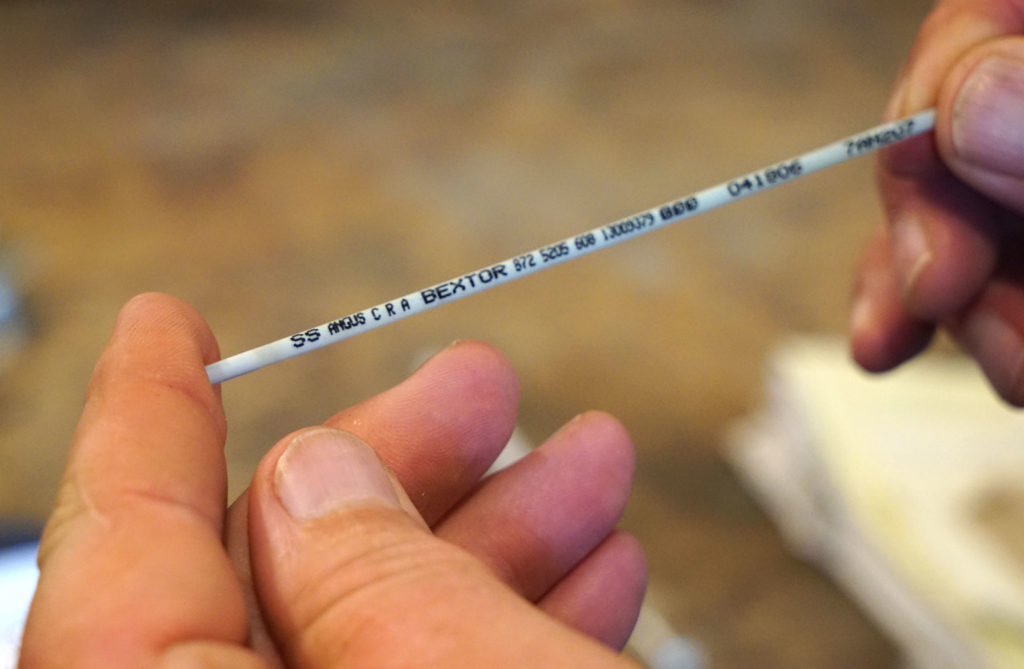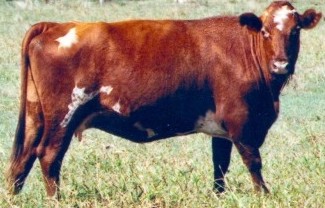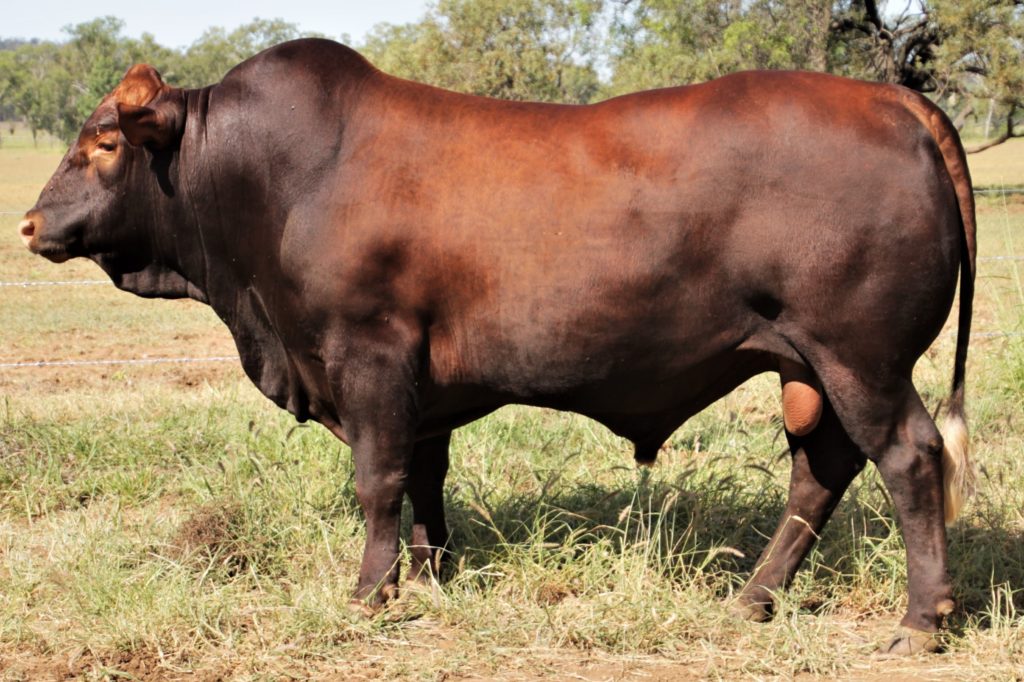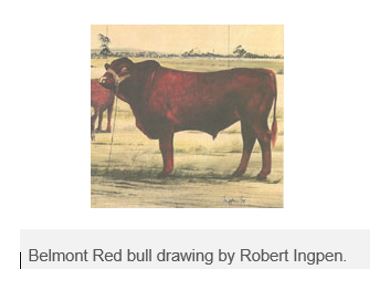
Full of bull: The bull semen ‘straws’ on sale look something like this. Image credit: Carl Rugg
This isn’t something from the Betoota Advocate. It’s real and it’s our science.
We have a collection of bull semen, stored away in liquid nitrogen at a livestock breeding facility in Rockhampton, Queensland.
The semen we’re auctioning was collected during the 80s and 90s from a range of beef breeds, mainly the tropical Bos indicus or Bos indicus-influenced breeds. We used it for research to improve the genetic quality of Australia’s cattle lines to cope with the harsh Aussie climate.
All up there are nearly 5000 ‘straws’ of semen going under the hammer, in 150 lots. The reserve price is only $2 per straw. We’re giving the beef industry the opportunity to make calves by auctioning it off. The funds raised will go to Drought Angels, the Queensland Country Women’s Association and Beyond Blue to help rural communities.
Which breeds we collected, and why
We first started our research on improving both Bos indicus and Bos taurus breeds in the 1950s. Cattle in the north suffered a high mortality rate, dying from heat exhaustion and tick-related diseases. Most of the breeds available at the time originated from Britain and Europe (known as Bos taurus) and were not as well suited to our climate as Bos indicus, which largely originate from India and tropical regions.
So we researched particularly Bos indicus–influenced cattle, and created new breeds suited to our harsh climate. We collected the semen as part of the work at our former research station at Belmont in central Queensland.
The Adaptaur

The Adaptaur – a breed we developed to thrive in the harsh Aussie climate.
Researchers at Belmont assessed crosses between the British beef breeds Hereford and Shorthorn for increased performance in Northern Australia. They started noticing that some animals showed far better adaptation to tick infestations and heat. They selected animals with these characteristics and over time they created the Adaptaur breed of tropically-adapted Hereford Shorthorn cattle. For various reasons, this program and the attempts to commercialise the breed are largely forgotten.
We are offering semen straws for auction from around a dozen Adaptaur bulls that remained when the program was wound up in the 90s.
The Belmont Red
We also conducted experiments at Belmont to compare different genetics for growth, fertility and tick resistance. These provided the scientific evidence the genetic material from India and Africa performed better in the northern Australian climate. We were also instrumental in helping the livestock industry diversify the national herd to fit those conditions better.
Our scientists bred Australia’s first ‘tropical composite’ breed, the Belmont Red, which was 50 per cent Afrikaner (from Africa) and 25 per cent each of Hereford and Shorthorn (from Britain) breeds.
But we initially had to convince some in the industry to use these ‘weird new animals’.
In 1972, the first Belmont Red bulls we released went to a property near Rockhampton. They were brought up in tough conditions which tested them thoroughly. We even exposed them to cattle ticks and grazed them on low quality pasture. They were so scrawny, the farmer we gave them to was so embarrassed. He ended up putting them in a paddock as far away from the house as possible so visitors couldn’t see them. But when the bulls’ first calves were weaned, they averaged 10 kilograms heavier than the other stock on the same property. The farmer was happy with his Belmont Reds then!
Belmont Reds have stood the test of time as a breed and there is a Belmont Red Association. We have around 80 lots of Belmont Red semen on offer collected between 1979 and 1991. Also available are semen straws from three Afrikaners related to the original bulls used in the Belmont Red program.

The Belmont Red, another breed we developed and Australia’s first ‘tropical composite’ breed. Image credit: Seifert Belmonts
The Boran and Tuli
We were part of a group that imported the African beef breeds, Boran and Tuli, to Australia. Australia’s biosecurity regulations make direct imports from Africa impossible. So our researchers collected embryos from selected stock in East Africa, froze them, and took them to Australia’s off-shore quarantine station in Cocos Islands. There they were implanted in Friesian surrogate mothers flown from Australia especially for the task.
After 74 successful births, the young Boran and Tuli calves were tested for disease before being flown to the mainland in March 1990.
We’ve got semen on offer from ten of the original imported Tuli bulls with names like Lupinga, Kikami, Lupala and Matetsi as a reminder of their ancestral homeland.
Why we’re getting rid of them
We’ve used the collection for research purposes over the years, for example contributing whole genome sequences to the 1000 Bull Genomes project. But we’re no longer in the business of creating new cattle breeds or conducting large scale genetics experiments at research stations. Increasingly, we carry out our research in partnership with industry. Since the completion of the cattle genome sequence in 2009, research into selective breeding and improving cattle herd genetics has moved into the digital age with observational studies, statistical imputation and machine learning replacing traditional methods.
As a result of the genetics experiments run at Belmont and other research stations, cattle producers now can improve the genetics of their herds by using estimated breeding values, or EBVs, which allows them to choose a bull based on his rating for various traits, such as growth rate and fertility, that he then passes on to his progeny. We recently released the world’s first EBV that helps farmers select Angus cattle with healthier offspring, called Immune Dex.
Going retro with older genetic lines
The semen could offer breeders a chance to bring back some of the older genetics from breeds whose genetics aren’t readily available anymore.
The semen on offer is from Belmont Red, Tuli, Brahman, Adaptaur, Red Angus, Afrikaner, Simbrah, Charbray and others.
Of course, most livestock breeding is done the good old-fashioned way. But artificial insemination with semen is also a big part of most livestock industries. Cattle breeders use artificial insemination to access genetics from bulls that mightn’t be locally available, to reduce the number of bulls they need to own, or other reasons. With the current drought, a benefit of AI can mean one less live bull they have to buy and then continue to feed.
With the breeding season upon us and due to finish for most of the country soon, bull and semen sales are in full swing.
We know that semen collected and stored under the right conditions can last indefinitely. So theoretically the semen should still sire calves, but there’s a chance that some of it may no longer be viable. There is also no genetic data on the bulls themselves. This means we know very little about what genetic traits the semen might pass onto their offspring, such as weight, size colour etc.

A Belmont Red bull from ex-CSIRO scientist and illustrator Robert Ingpen.
Putting in a bid
So, how do producers and breeding societies bid on our semen for charity?
- Visit Auctions Plus to check out the semen straw lots and breeds available
- Sign up to bid on lots
- Put in your bids between 27-29 November.
Beef Breeding Services, who have stored the semen for several decades, the online livestock auction house, Auctions Plus, and SBB/GDL, the participating livestock agent, are all donating their services. All are helping us make sure as much raised as possible goes to charity.
If buying cattle semen is not your thing, you can donate to the charities regardless! Here are some ideas:

